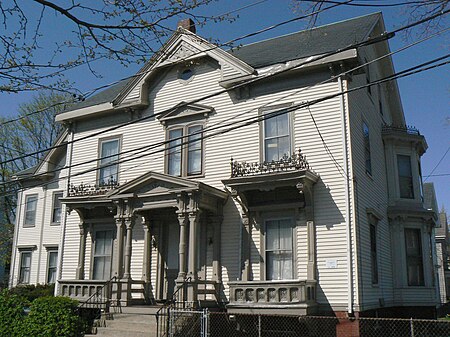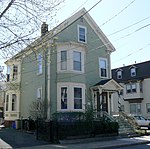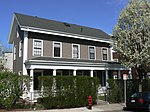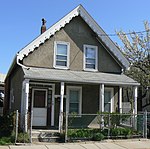Charles Williams Jr. House
Alexander Graham BellHouses on the National Register of Historic Places in Somerville, MassachusettsSomerville, Massachusetts Registered Historic Place stubsTelecommunications stubs

The Charles Williams Jr. House, built in 1858, is a historic house in Somerville, Massachusetts. Charles Williams Jr. was a manufacturer of electrical telegraph instruments at 109 Court Street in Boston. Alexander Graham Bell and Thomas A. Watson experimented with the telephone in Williams' shop, and it was there that they first heard indistinct sounds transmitted on June 2, 1875. The first permanent residential telephone service in the world was installed at this house in 1877, connecting Williams' home with his shop on Court Street in Boston. Williams had telephone Numbers 1 and 2 of the Bell Telephone Company.
Excerpt from the Wikipedia article Charles Williams Jr. House (License: CC BY-SA 3.0, Authors, Images).Charles Williams Jr. House
Arlington Street, Somerville
Geographical coordinates (GPS) Address Nearby Places Show on map
Geographical coordinates (GPS)
| Latitude | Longitude |
|---|---|
| N 42.385833333333 ° | E -71.081944444444 ° |
Address
Arlington Street 10
02145 Somerville
Massachusetts, United States
Open on Google Maps








